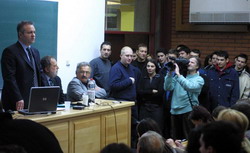- Serbia
Get to know Serbia
- Citizens
Culture and science
Health services
Pension and disability insurance
- Business
Employment
Economy
- Media
- Government
- Contact
Keep in touch
Contact form
Back
Keepin touch
Whether you have a question, comment, suggestion or any problem in the purview of the government, send us your message and we will try to respond as soon as possible. If your problem is not in our purview, we will forward your message to the relevant institution.
Q:
A:
2004 budget deficit half the size of 2003 gap
Belgrade,
15 December 2004
Serbian Finance Mladjan Dinkic said today that economic policy measures for 2005 will cut the budget deficit to 1.4 percent of GDP, adding that Serbia will end 2004 with a budget gap of two percent of GDP, half the size of that recorded at the end of 2003.
At a lecture on the 2005 economic policy, held at the Belgrade Faculty of Economics, Dinkic said that Serbia must speed up growth over the next 20 years so as to get level with Croatia and then to start thinking about catching up with developed European countries. “To achieve this goal is a great challenge for me and for future finance ministers,” said Dinkic.
Serbia’s GDP per capita is $2,900, half that of Croatia’s and four times smaller than Slovenia’s, said Dinkic, adding that this means that economic growth has lost momentum in Serbia.
This year will see the economy growing eight percent, but one must not be satisfied with that, even though the pace is the fastest since 1979, said Dinkic, explaining that the major obstacle to growth is the foreign trade gap, expected to reach a record $6.5 billion this year.
With a tight budget and restrictive monetary policy, we expect that value added tax will reduce grey economy to 20 percent of GDP, Dinkic stressed.
He announced that next year will see stricter control of salaries in the public administration and public utilities, which he said will help do the hardest of jobs – the restructuring of public utilities.
Although Serbia is one of the few Eastern European countries without VAT, Dinkic said that there are benefits in being late as the tax burden on foreign investors is much lighter than in EU member and applicant countries.
This is our greatest opportunity to attract foreign investors already operating in southeastern Europe and to relocate them to Serbia, said Dinkic.
Serbia’s GDP per capita is $2,900, half that of Croatia’s and four times smaller than Slovenia’s, said Dinkic, adding that this means that economic growth has lost momentum in Serbia.
This year will see the economy growing eight percent, but one must not be satisfied with that, even though the pace is the fastest since 1979, said Dinkic, explaining that the major obstacle to growth is the foreign trade gap, expected to reach a record $6.5 billion this year.
With a tight budget and restrictive monetary policy, we expect that value added tax will reduce grey economy to 20 percent of GDP, Dinkic stressed.
He announced that next year will see stricter control of salaries in the public administration and public utilities, which he said will help do the hardest of jobs – the restructuring of public utilities.
Although Serbia is one of the few Eastern European countries without VAT, Dinkic said that there are benefits in being late as the tax burden on foreign investors is much lighter than in EU member and applicant countries.
This is our greatest opportunity to attract foreign investors already operating in southeastern Europe and to relocate them to Serbia, said Dinkic.
-
 Belgrade, 23 December 2025
Belgrade, 23 December 2025Enhancing implementation of IPARD III programme
-
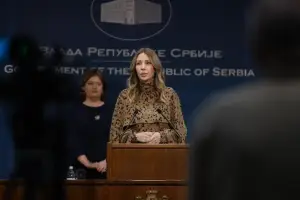 Belgrade, 12 December 2025
Belgrade, 12 December 2025Construction of gas interconnector with North Macedonia by end-2027
-
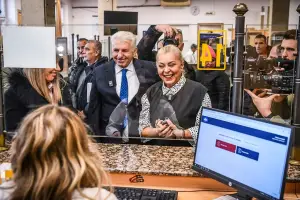 Belgrade, 8 December 2025
Belgrade, 8 December 2025Enormous public interest in registering illegal facilities
-
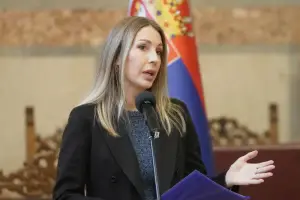 Belgrade, 8 December 2025
Belgrade, 8 December 2025State doing everything to preserve stability of energy supplies
-
 Belgrade, 5 December 2025
Belgrade, 5 December 2025State doing everything to avoid shortage of oil derivatives
-
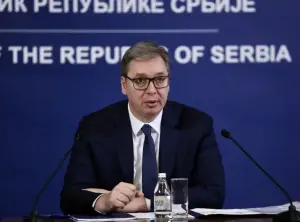 Belgrade, 2 December 2025
Belgrade, 2 December 2025Serbia has not received positive decision from US over NIS
-
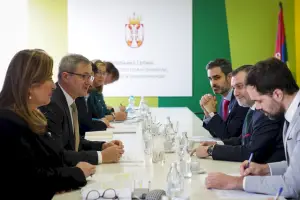 Belgrade, 2 December 2025
Belgrade, 2 December 2025Spanish companies invited to invest in Serbian agriculture
-
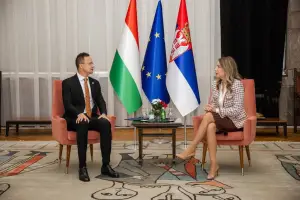 Belgrade, 26 November 2025
Belgrade, 26 November 2025Highest level of cooperation, information exchange with Hungary in field of energy
-
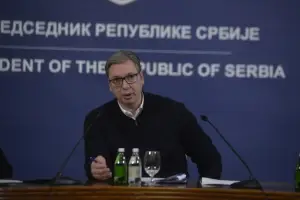 Belgrade, 25 November 2025
Belgrade, 25 November 2025OFAC’s decision on NIS licence in next four days
-
 Belgrade, 24 November 2025
Belgrade, 24 November 2025State to maintain stability of oil derivatives supply

